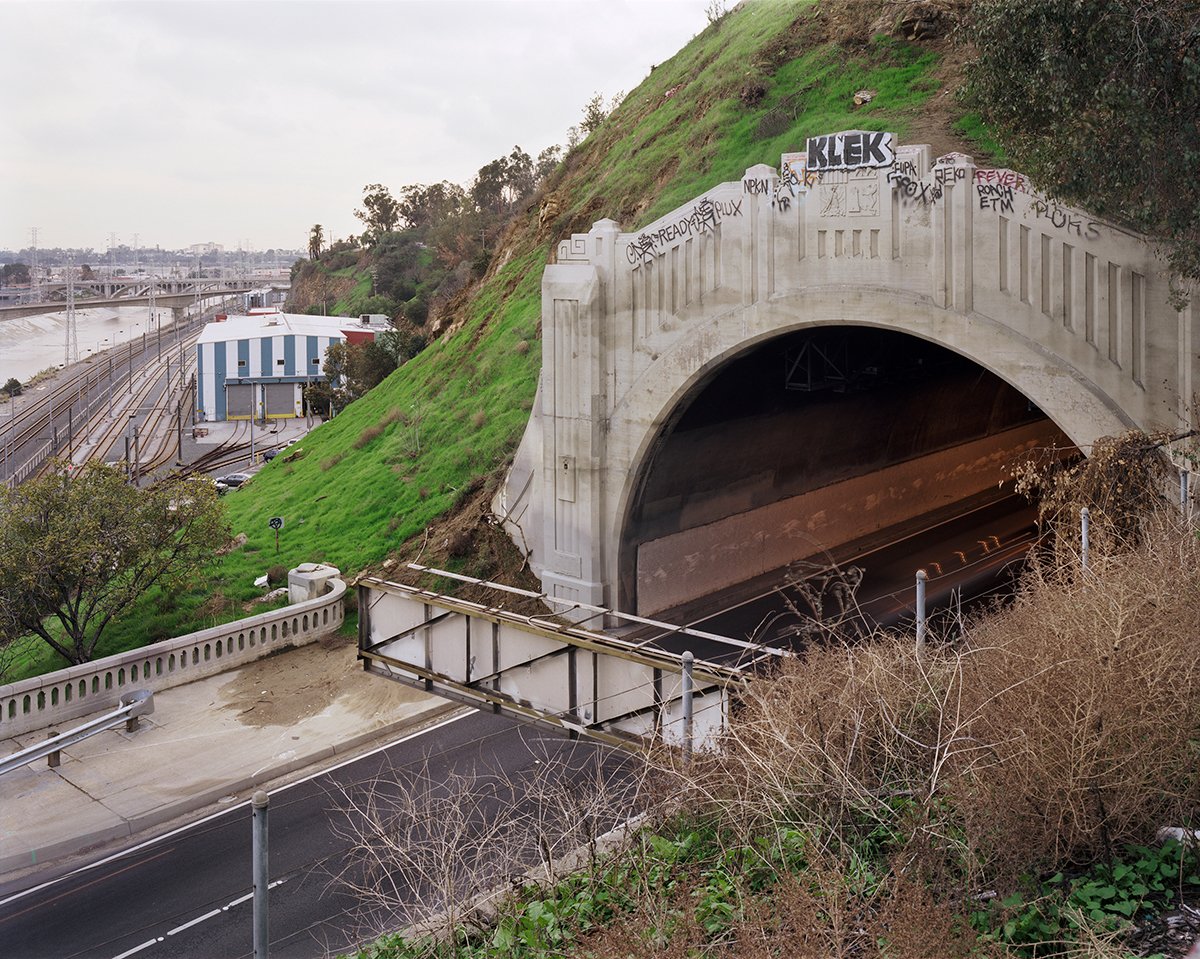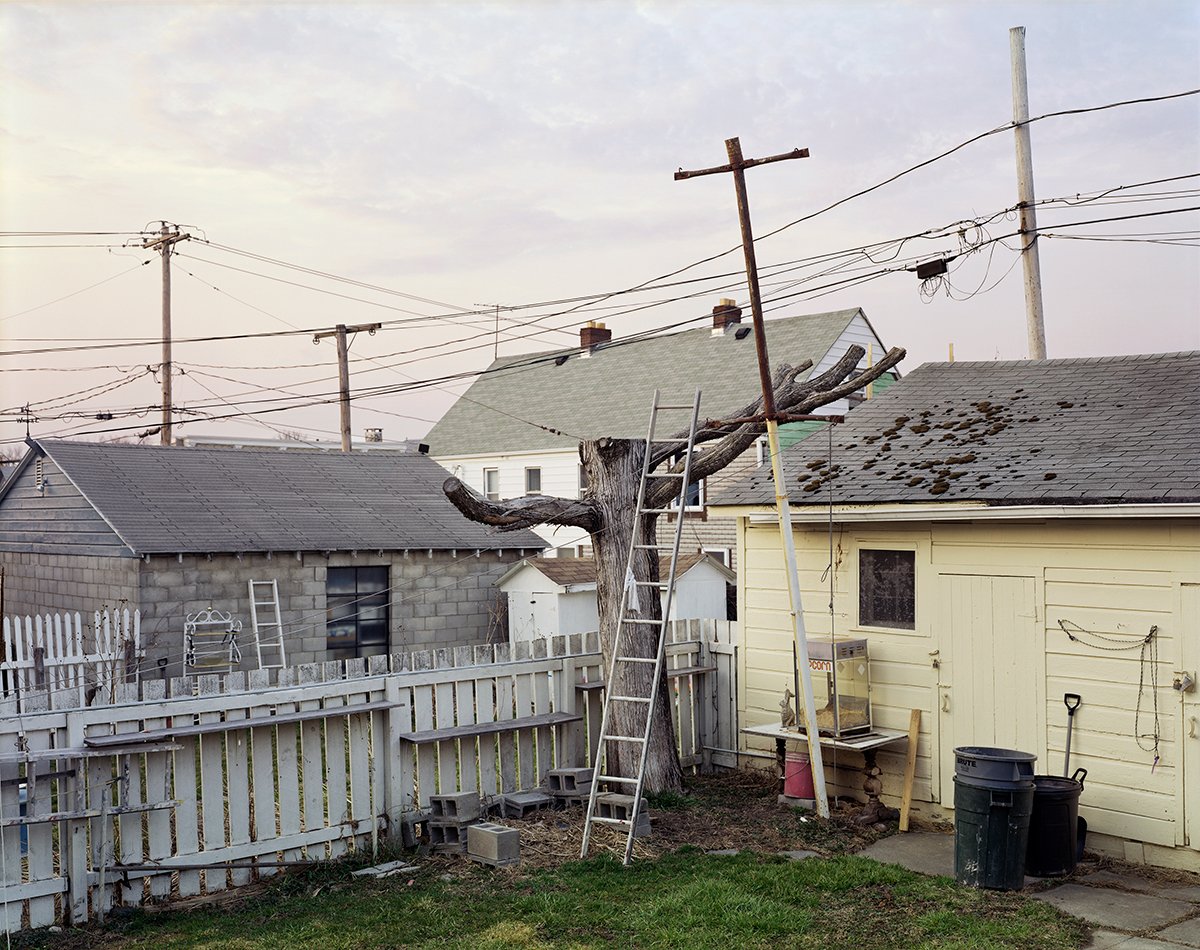Paloma Dooley: Edges / Passageways
“I was born and raised in New York. I spent an influential and magical year of my youth in Roswell, NM, which instilled in me a love of the landscape and being on the road. As a teen, I turned to photography as an outlet for longing, searching, and wonder after losing my dad, who was an artist. I photographed his studio and I photographed in the landscape as a way to work through grief. I attended Bard College and earned a B.A. in Photography in 2015; my thesis project was awarded the Stuart Strizler Levine Award. In 2016 I completed a monthlong residency at the Vermont Studio Center, where I gave an artist’s talk and slide lecture. My work was included in "Too Good to be Photographed," ed. Paul Paper, a publication that investigates the strengths and failures of photography as a medium, in 2017. In 2018, I was commissioned to create a new body of work, “What it Feels Like to be a Beautiful Rectangle,” for “Augenblick Mal,” a Swiss publication. My recent project Ground Control and accompanying text was published in Carla Issue 21 in August 2020. I am also included in “Primal Sight,” 2021, a groundbreaking look at contemporary black and white photography edited by curator Efrem Zelony-Mindell. When I’m not focusing on my own photographic projects, I am working on the small artist-run exhibition space, Hermitage, that I co-founded in 2020.” - Paloma Dooley
RR: Paloma, glad to have you here and speak on your work. Let’s introduce Edges / Passageways because I think it has resonance across many themes and different regions. What guided you in creating this work?
PD: Thanks so much for inviting me. This was the first body of work I began after finishing college. I lived by myself on a rural road in Upstate New York, away from town centers. I was a little lost and scattered—trying to make work on my own, suddenly—after having felt I had thrived within the structure of school. I tried to use my camera as a dowsing rod, going out to shoot with no destination in mind, stopping when I felt compelled to make a picture. After several months of letting myself experiment, I looked at what I’d been shooting and saw a pattern—I was being drawn, over and over, to photograph fences, walkways, barriers, and paths. I decided to follow this thread. I would ask myself as I was photographing: is this an edge between places or areas? A passage or connector? Can it be both?
RR: I find it interesting that when we think of lines and borders that divide space we imagine large and overbearing structures that are intended to overwhelm, yet we rarely think of a domestic fence as being a stand-in for that same kind of division and how they mark an entry and no entry point.
PD: I think the word border has immediate and obvious political connotations, and implies fortification, authority, permanence, and threat of force. Fortified borders serve the purpose of a big sign that says: “you cannot enter without permission,” yet people will do just that—enter without permission—so borders are, at their core, signs, but they’re also suggestions: “you should not enter without permission,” and they’re attempts at control via threat: “you should not enter without permission, or you will be punished.” They’re a sort of made up thing, a shared belief, or agreement, the way that money or the lines painted on the road are a belief or an agreement. So, a sign, a suggestion, a threat, a belief—for me this is the essence of what a border is, and I think this is how fences function on a personal, domestic scale, too. This project isn’t so much about the borders that are drawn and enforced at the international level—and I haven’t gone to those locations to shoot—but it is about the attempts to control movement that happen at any scale, civic or personal. A cordoning off, a parceling out—something that creates a “here” and a “there,” something that influences the way you’re able to move along a path or through a space, whether you realize its power or not.
RR: What would you say about Passageways and their role in your investigation?
PD: Passageways are often a sort of antidote to what I see as the inherent absurdity—even cruelty—of edges, borders, divisions. They are a reminder that connection and subversion are still possible—that there are ways through and around seemingly impermeable barriers—despite authority or powers that want to prevent movement. Or permit only a narrow type of movement. But sometimes passageways can function as borders, too. Think of freeways—ostensibly a connector across a city or between states; their construction often cuts neighborhoods in half and fractures communities.
RR: Could you talk a little bit about the remnants of a border or passageway. In your images there is often what I would describe as the ghost of these ideas. What do you look for in a structure that has been broken or dilapidated?
PD: I don’t set out to photograph broken or dilapidated structures, but I do look for what I think of as failed or former borders. Sometimes that is a structure that has long outlived its original function, can’t serve its once-intended purpose, and is succumbing to the non-decisions of dereliction and abandonment. “Ghost of an idea” is the perfect description of some of these former borders; the physical barrier remains somewhat intact but the idea itself—the decision that was once made to try and draw a line—is long gone.
Sometimes a former border becomes a passageway or gives way to movement—think of a fence falling down, or a fence with a hole in it. Former borders are often permeable. Without maintenance, the threat that borders are supposed to carry is slowly neutralized. It’s like the “Keep Out” sign is still posted but the letters have faded.
When I think of a ghost of a passageway, I think of desire paths through grass or dirt—where no paved path leads a way, peoples’ footfalls forge a line through space that others may follow. A physical trace of many movements.
One of the most important parts of this project, to me, is a photo of a former passageway—a road connecting parking lots around some big box stores—now severed by three massive concrete blocks strewn across the pavement. There’s been a change in permeability—the blocks keep cars from accessing this passage, but don’t stop individual people or animals. A lot of the times I was photographing a fence or a barrier, I would ask myself: who is this for? Who or what is being kept out? And I liked that I could see this adjustment that had happened—cars were once permitted, but now they’re not.
RR: The root of your work asks questions about control and how much control we (humans) want. There is an underlying global theme of man vs land and the ways we facilitate the haves and the have nots on this landscape, both working for us and against.
PD: Definitely. I am interested in control, but I’m really interested in attempts at control, futility of control, and ultimately, impotence and failure of methods and structures of control. We can’t control as much as we wish we could, and that unfulfilled desire is marked in the landscape. By looking at what we—as a collective and as individuals—invest in and what we neglect, we can see what we’re afraid of and where our priorities are. I explore this theme, too, in Ground Control, the project that followed (grew out of ?) Edges / Passageways. In that project I look at the interventions—large and small, monumental and personal—that people make to force livability in an inhospitable landscape.
RR: Getting back to photography, who are some of your influences within the medium and your work?
PD: This is such a hard question! I started to make a mental list of who I feel influenced by and I realized I was making a list of every person I’ve ever known! To be honest, my biggest influences as a photographer are probably still my teachers: An-My Lê, Stephen Shore, Tim Davis, Dave Bush, Barbara Ess, Laura Steele. I think of them often when I’m trying to make decisions about editing and sequencing photos together. I had the great luck of working for Wendy Ewald for a few years and the way she incorporates captions and text into her bodies of work has been very influential to me. Outside of photography I feel deeply influenced by the painters of the Northern Renaissance, the very beginning of landscape as a “genre.” My teacher Teju Cole once called Pieter Bruegel the first street photographer and I think about that all the time. I owe a lot to my dad, too; he was an artist who worked with sculpture, collage, and video. He had an unparalleled work ethic and he was someone who could notice some very tiny detail of the world and then make a lot of work about it. I try my best to do that.
RR: Do you see your investigation of the lines, remnants, ghost of lines, etc. that are drawn across landscapes continuing? Or has it developed into something else?
PD: I set this project aside in late 2018 when I moved to Los Angeles and wanted to make work less about movement and land ownership, and more about land use and intervention in arid and seismically active Southern California. But I see lines in the landscape everywhere I go, and it is an open-ended enough theme that it could continue on. I have often thought about adding more to the original body of work.
RR: Are there other projects you have going on that you are excited about?
PD: I’ve been slowly working on a project about my garden and neighborhood since 2020. I call it “Distancely” for now, after a word that my young neighbor invented to describe how people were permitted to spend time together during the most restrictive periods of lockdown: outdoors, in pairs and in trios, cautiously, six feet apart. We can have a picnic together, but distancely. In the early days, weeks, months of the pandemic, I felt really bereft and unable to photograph. I set my camera aside and turned to my garden as a source of peace and strength. I focused on the quick lives of my plants while I experienced a dearth of growth and change in my own life. After a while, I felt a wary joy alongside the crushing grief and anxiety, and a desire to examine this twin situation of loss and fulfillment drove me to photograph again.
RR: Thanks again for joining us Paloma! Excited to see all that you are working on!
PD: Thank you! When I’m not working on my own photo projects, I’m working sporadically on the tiny gallery I co-founded in 2020: Hermitage.
















